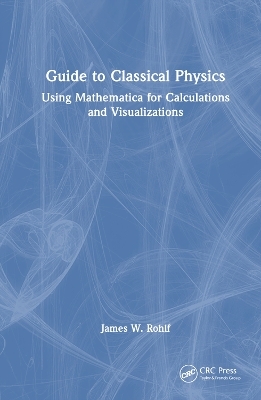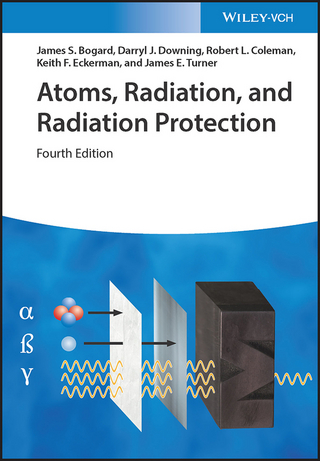
Guide to Classical Physics
CRC Press (Verlag)
978-1-032-77241-7 (ISBN)
- Lieferbar (Termin unbekannt)
- Versandkostenfrei innerhalb Deutschlands
- Auch auf Rechnung
- Verfügbarkeit in der Filiale vor Ort prüfen
- Artikel merken
The calculations are performed in Mathematica, and stress graphical visualization, units, and numerical answers. The techniques show the student how to learn the physics without being hung up on the math. There is a continuing movement to introduce more advanced computational methods into lower-level physics courses. Mathematica is a unique tool in that code is written as "human readable" much like one writes a traditional equation on the board.
The companion code for this book can be found here: https://physics.bu.edu/~rohlf/code.html
Key Features:
• Concise summary of the physics concepts
• Over 300 worked examples in Mathematica
• Tutorial to allow a beginner to produce fast results
The companion code for this book can be found here: https://physics.bu.edu/~rohlf/code.html
James W. Rohlf is a Professor at Boston University. As a graduate student he worked on the first experiment to trigger on hadron jets with a calorimeter, Fermilab E260. His thesis (G. C. Fox, advisor, C. Barnes, R. P. Feynman, R. Gomez) used the model of Field and Feynman to compare observed jets from hadron collisions to that from electron-positron collisions and made detailed acceptance corrections to arrive at first the measurement of quark-quark scattering cross sections. His thesis is published in Nuclear Physics B171 (1980) 1. At the Cornell Electron Storage Rings, he worked on the discovery of the Upsilon (4S) resonance and using novel event shape variables developed by Stephen Wolfram and his thesis advisor, Geoffrey Fox. He performed particle identification of kaons and charmed mesons to establish the quark decay sequence, b –> c. At CERN, he worked on the discovery of the W and Z bosons and measurement of their properties. Presently, he is working on the Compact Muon Solenoid (CMS) experiment at the CERN Large Hadron Collider (LHC) which discovered the Higgs boson and is searching for new phenomena beyond the standard model.
Chapter 1: Units. Chapter 2: Functions. Chapter 3: Vectors. Chapter 4: Motion in One Dimension. Chapter 5: Motion in Two and Three Dimension. Chapter 6: Newton's Laws. Chapter 7: Energy. Chapter 8: Momentum. Chapter 9: Rotational Motion. Chapter 10: Universal Gravitation. Chapter 11: Fluids. Chapter 12: Thermodynamics. Chapter 13: Waves. Appendix A: Mathematica Starter. Appendix B: Spherical and Cylindrical Coordinates. Index.
| Erscheinungsdatum | 18.10.2024 |
|---|---|
| Zusatzinfo | 101 Line drawings, black and white; 101 Illustrations, black and white |
| Verlagsort | London |
| Sprache | englisch |
| Maße | 156 x 234 mm |
| Themenwelt | Naturwissenschaften ► Biologie |
| Naturwissenschaften ► Physik / Astronomie ► Angewandte Physik | |
| ISBN-10 | 1-032-77241-7 / 1032772417 |
| ISBN-13 | 978-1-032-77241-7 / 9781032772417 |
| Zustand | Neuware |
| Haben Sie eine Frage zum Produkt? |
aus dem Bereich


